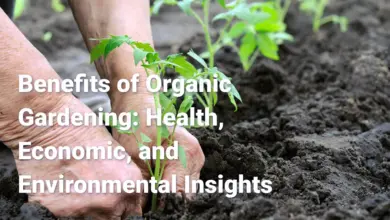Water Conservation Techniques: Essential Methods and Benefits for Sustainable Living
Water Conservation Techniques
Our world thrives on the silent whispers of water, a resource so essential yet often taken for granted. As societies burgeon, the cacophony of demand risks drowning out nature’s gentle streams. This growing global narrative calls for a renewed reverence for water. Water conservation isn’t just an environmental ethos it’s a necessity, echoing a promise for tomorrow’s children and the planet they will inherit. Embracing mindful practices not only safeguards life’s intrinsic rhythm but also embodies the hopeful strides humanity can make in harmony with nature.
Importance of Water Conservation
Water conservation is not just a measure of responsibility but a testament to human ingenuity and cooperation across boundaries. As climates shift unpredictably, the preciousness of water surfaces prominently. Conserving water not only ensures the sustenance of essential ecosystems but also fortifies the resilience of human communities against the threats of climate change. This concerted endeavor underscores the vibrancy of life, marshaling communities to revisit and cherish their relationship with one of nature’s fundamental gifts.
Benefits of Water Conservation
Delving into the manifold benefits of water conservation unveils an expansive vista where sustainability forms the horizon. At its core, water conservation is tantamount to ensuring a stable resource that douses the flames of scarcity for future generations. The narrative of sustainability weaves itself into every droplet saved, promising a tapestry wherein humanity flourishes amidst an ever-changing environ. Conservation habitats thrive, and their ecology enriches biodiversity, allowing nature’s palette to expand with every preserved ecosystem. In an economic dance, conserving water trims household and business spending, while the energy sector celebrates reduced demand in consumption and resulting emissions.
- Sustainable Resource Management: Ensures consistent water availability, combats shortages.
- Environmental Protection: Contributes to biodiversity, promotes habitat preservation.
- Energy Savings: Leads to reduced energy requirements in water management.
- Economic Benefits: Cuts on utility costs, boosts agricultural productivity.
- Public Health: Assures cleaner sources, reduces pollution-related health risks.
Environmental Impact of Water Conservation
The environmental impact of water conservation resonates deeply within the ecological tapestry, delivering a symphony of reduced stress and revitalized expanses. Every conserved drop replenishes, restoring ecosystems to their harmonious origins, like soothing recitals after a cacophonous day. Conservation practices, meticulous as they are, translate into healthier wetlands and rivers, fostering biodiversity that is life’s gentle applause. Each step towards minimal water usage alleviates the strained chords of over-extraction and pollution, coaxing a resilient fortissimo that stands against climate change.
Types of Water Conservation Techniques
The diversity in types of water conservation techniques paints a vivid spectrum, where innovation meets necessity. Each technique is tailored to address specific aspects of water wastage, inviting us to partake in a balanced approach to conservation. Techniques span from rural stretches to urban spaces, capturing nuances of water usage with personalized grace. The significance of integrating various conservation methods cannot be understated as they collectively fortify the pillars of sustainability.

Outdoor Water Conservation Techniques
Outdoor water conservation involves not just techniques but redefining relationships with our open expanses. Constructing drought-resistant gardens becomes more than a practice it’s a testament to creative adaptation. By leveraging nature’s cues, such as the resilient fortitude of indigenous plants, we embark on a dance of balance and resilience. As water droplets feed directly to plant roots, evaporation diminishes, allowing conservation to bloom. Modern irrigation subtracts waste, converting hesitant use into eager stewardship of water’s benevolence.

- Plant drought-resistant vegetation capable of surviving minimal watering.
- Implement efficient irrigation systems to deliver water skillfully.
- Harness rain barrels to capitalize on natural downpours.
- Water during cooler times to mitigate evaporation.
- Mulch to retain soil moisture and deter weeds.
Indoor Water Conservation Techniques
Indoor practices of conserving water define the intersection of conscientious living and modern convenience. Fostering a sanctuary of efficiency, dwelling spaces transform under the gaze of technology and innovation. From low-flow showerheads to efficient dishwashing, homes whisper harmonies of conservation amid daily routines. Each appliance filled with promise, conserves water with subtlety akin to an adept master painting with maximum impact yet minimal use.
- Install low-flow fixtures to drastically cut water use.
- Replace toilets with high-efficiency models to conserve per flush.
- Only run dishwashers and washing machines on full loads.
- Conduct regular checks and repairs to prevent leaks.
- Recollect shower warm-up water for subsequent use.
Efficient Appliances and Fixtures
A home becomes an ally in conservation efforts through the embrace of efficient appliances and fixtures. By integrating these into our lives, water thrift becomes second nature as fixtures transform consumption into conservation. As technology flourishes, so too does the capacity for wisdom in resource use, with each appliance an emissary of sustainability in our domiciles.

Low-Flow Showerheads
The elegance of a low-flow showerhead epitomizes the synergy between form and function, vitalizing an otherwise routine act of simplicity. Each droplet strikes with a purpose, conserving eagerly, yet effusively embracing its user with a lush experience. Here, innovation sees no bounds, plumbing tasseled with aerating technologies to furnish showers that give without substantially taking.

- Limits water flow to 2.0 gallons per minute or less.
- Saves an average of 2,700 gallons of water annually per family.
- Reduces energy consumption by approximately 370 kilowatt-hours each year.
- Aerating models blend air and water; non-aerating showerheads focus streams.
- Quick installation with everyday tools, adaptable to existing setups.
Dual Flush Toilets
Dual flush toilets herald a new era in water efficiency, combining high-tech flush systems that marry conservation with functionality. Providing a flush that adjusts to need with a half flush for liquids and a full for solids the system maneuverably reduces water exertion. Its genius employs precision and modernism to choreograph a water symphony.

- Half flush option uses ~0.8 gallons, full flush uses ~1.6 gallons.
- Saves approximately 67% against conventional single flush toilets.
- Contributes to reduced wastewater and alleviated strain on supply.
- EPA notes ~13,000 gallons saved annually for each household.
- Modern engineering reduces common issues such as clogs significantly.
Water-Saving Practices
Adopting sustainable water-saving practices transforms intent into impactful daily actions. These habits form concentric circles of influence, extending beyond immediate actions into community ethos enabling a future aligned towards ecological benevolence. As each method compounds conservation, they breathe life into collective accountability and water stewardship.
Rainwater Harvesting
Rainwater harvesting taps the primordial grace of rain, a method that transcends seasons and geography. As the earth drinks directly from the bounty of skies, the practice captures the fluid grace of fleeting raindrops with the precision of science. This pragmatic dance reduces dependency on traditional reserves, ensuring rain’s cyclical return yields infinite gifts.

- Classifications: Rooftop, surface runoff, underground storage.
- Mitigates stormwater runoff, reduces flood and erosion chances.
- Comes with maintenance needs to avoid contamination.
- Often, local regulations dictate its establishment and use.
Greywater Recycling
Greywater recycling weaves ingenuity with resourcefulness, repurposing wastewater into a tapestry of usable supply. Unlike its darker counterpart, greywater cleanses post-dare, serving anew in irrigation or flushing. Through innovative filtering and treatment systems, it alters the consumption pattern, allowing homes to flourish under its recycled benevolence.
- Utilizes non-toilet wastewater for uses like irrigation.
- Reduces load on municipal treatments, provides a local water source.
- Requires biological and membrane systems for treatment.
- Can recoup investment through water and utility savings.
Innovative Water Conservation Technologies
Innovation seeds the ground for generational advancements in water preservation, translating practices into transformative technologies. As digital forefronts intersect with conservation needs, smart technologies usher in new realms of efficiency and wisdom. This union heralds a broader onset where judicious water usage echoes the fervent embrace of technology.

Smart Irrigation Systems
The landscape of smart irrigation systems marries technology with the perennial task of nurturing crops. Like vigilant guardians, they work with the cadence of the cloud and sensors, delivering precision akin to an artist’s brush on a masterpiece. Not just labor-saving, they are water-wise, optimizing each droplet, ensuring abundance does not mean waste.

- Leverages IoT, AI in delivering precise water usage.
- Employs sensors and weather stations for accurate watering schedules.
- Expected water savings of up to 25% in urban settings.
- Remote control via smartphone apps allows real-time adjustments.
- Reduces evaporation and runoff through precision.
Water-Saving Devices
Today’s water-saving devices are tomorrow’s sustainable legacies. Addressing the minutiae of consumption, these technologies are more than implements they’re a philosophy. Their provision defies waste, equipping homes and industries with the tools to wield water wisely, a synthesis of conception and conservation.

- Feature IoT for real-time monitoring and automatic leak detection.
- AI-powered systems facilitate preemptive actions to avoid major leaks.
- Optimal for agricultural setups drawing schedules from weather data.
- Encourage education and outreach for community-driven conservation.
Community and Policy Initiatives
Community and policy initiatives act as the guiding constellation for water conservation’s odyssey, driving collective strides with purpose. Through deliberate community engagements and whispered policies cloaked in persuasion, these initiatives sew the fabric of sustainable stewardship. They compel everyone to thread a path entwining proactive measures, contemporary policies, and committed guardianship over what was once presumed infinite.
Public Awareness Campaigns
Public awareness campaigns transcend mere education, weaving garments of understanding that blanket entire communities. These campaigns blend impactful stories and vivid images to engender behavioral metamorphosis, reminding the public of their fragile web hold over water. The familiar cleft of responsibility realigns as talents harness collective action, fostering water-saving crusades.
- Engages communities through interactive and educational programs.
- Utilizes relatable messaging to inspire behavior change.
- Initiatives like Denver Water’s campaign focus on reducing usage via awareness.
- Involves multimedia avenues for comprehensive reach.
Government Regulations on Water Use
Government regulations script the codices of accountability, setting a scaffold for public and private adherence to water conservation doctrines. Inherent within these policies, are layers of incentives and mandates aligning water use with broader ecological goals. Through collaborative infrastructures, policies lay a path toward judicious water resource governance.

- Enforces mandatory water-quality education through guidelines.
- Implements tiered pricing to incentivize conservation during droughts.
- Engages in partnerships to better water resource governance.
- Empowers communities via water quality transparency initiatives.
Comparison of Water Conservation Methods
Comparative dialogues enhance our comprehension of the myriad techniques inherent in water conservation. By assessing the varied spectrum from innovative to traditional methods, the mache of striking the right balance between cost, efficiency, and efficacy sharpens. Such evaluations lend clarity to formulating nuanced approaches, where combined tactics yield the most resounding symphony of sustainability.

Effectiveness of Different Techniques
The effectiveness of various water conservation techniques hinges on several factors: adaptability, community engagement, and technological integrity. Like musicians in an orchestra, each approach plays its pivotal role, from structural devices ensuring efficient flow to behavioral paradigms adjusting communal patterns. Harvey’s water not only conserves but multiplies its utility, choral responses resounding within communities aiming at reduced usage and heightened awareness.

- Techniques range from structural, behavioral, technological.
- Drip irrigation and low-flow fixtures lead to significant water savings.
- Behavioral programs generate shifts in usage patterns when well-executed.
- Pricing mechanisms amend user consumption behavior effectively.
Cost-Benefit Analysis of Water Conservation Strategies
The efficacy of water conservation is often appraised through cost-benefit analyses (CBA), where strategic merits are calibrated against financial investments. By contemplating upfront expenditures against long-term rewards, CBA demystifies a sustainable journey in circuitous economics. Inspired by measurable outcomes, these analyses whisper wisdom into the harmonies between environmental gain and economic prudence.

- Initial high costs offset by long-term savings in smart systems.
- Drip irrigation and greywater recycling showcase favorable NPVs.
- Mitigates dependency on traditional water infrastructures.
- Returns include reduced stormwater, better municipal billing.
FAQ
- What are the most effective indoor water-saving devices? Low-flow showerheads and dual flush toilets are among the most effective, significantly reducing household water usage without compromising performance.
- How does rainwater harvesting benefit urban environments? Rainwater harvesting reduces reliance on municipal water supplies, alleviates stormwater runoff, and decreases urban flooding risks.
- What role does technology play in modern water conservation? Technologies like smart irrigation systems optimize water use efficiently in agricultural and landscaping applications, minimizing waste and enhancing productivity.
- Why are government regulations essential for water conservation? Regulations enforce sustainable practices, ensure water quality through education, and incentivize reduced consumption during droughts, fostering community collaboration.
- Can small household changes significantly impact water conservation? Yes, simple practices like checking for leaks and adopting efficient appliances can substantially lower water use and enhance sustainability.
Conclusion
The rhythmic pulse of water conservation carries us towards a more sustainable existence, buoying the intricate balances of ecology and everyday life. As practices refine and technologies evolve, we witness a grand confluence, an alliance of tradition and innovation craftily sculpting tomorrow. The choices we make reverberate beyond geographic confines, crafting a legacy far clearer and more potent than we imagined, etching a continuum of hope within every drop conserved.




